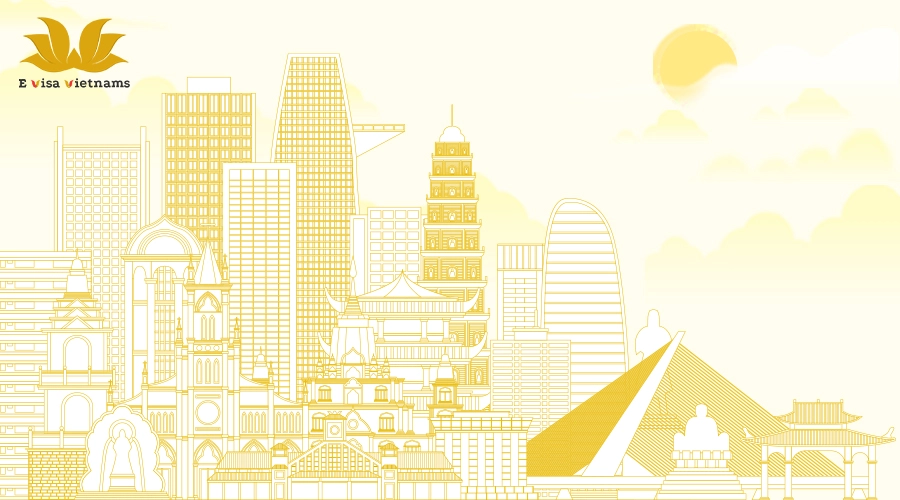vietnam culture guide 2026 - traditions, etiquette & travel tips
 Priyanshu Raghav
Priyanshu Raghav

Vietnam is one of Asia’s most fascinating destinations — a land of breathtaking rice terraces, vibrant cities, serene pagodas, and a deeply rooted culture that values harmony, respect, and hospitality. To fully enjoy your journey, it’s essential to understand Vietnamese customs and cultural etiquette before your trip. Whether you’re exploring ancient temples, shopping in bustling markets, or dining with locals, this comprehensive 2026 guide will help you experience Vietnam respectfully and confidently.
Understanding Vietnam’s Cultural Heritage
Vietnam’s culture is a harmonious blend of indigenous traditions and influences from China, France, and India. Its rich heritage is reflected in art, cuisine, family values, and social interactions. Visitors are often impressed by how deeply spirituality and community are woven into daily life.
The Vietnamese people place great importance on modesty, humility, and maintaining social harmony — known locally as “keeping face.” Understanding this concept helps travelers interact with locals more meaningfully.
The Importance of Respect and Modesty
Respect is the cornerstone of Vietnamese society. Politeness and subtlety are valued far more than direct confrontation. Always greet people warmly, show gratitude, and avoid behavior that could cause embarrassment to others.
Traditional Etiquette and Social Behavior
Greetings and Communication Style
A simple smile or nod is a common way to greet. A handshake is also acceptable, especially in cities. Use both hands when giving or receiving something as a sign of respect.
Respect for Elders and Hierarchy
Age and seniority are highly respected. Always greet the eldest person first and address them using appropriate titles such as “Anh” (older brother) or “Chi” (older sister).
Table Manners and Dining Etiquette
Meals are a communal experience. Wait for the host to invite you to start eating. Do not stick chopsticks upright in your rice bowl, as it symbolizes offerings to the dead.
What to Wear in Vietnam
Clothing Tips for Everyday Travel
Light, breathable clothing is ideal for Vietnam’s tropical climate. Cotton shirts, skirts, and shorts are suitable for casual settings. However, modesty is appreciated — avoid overly revealing outfits.
Dress Code for Temples and Religious Sites
When visiting pagodas or temples, both men and women should wear clothing that covers shoulders and knees. Carry a scarf or pashmina to cover up when needed.
Shopping and Bargaining in Vietnam
Haggling is a natural part of Vietnamese shopping culture. Markets, souvenir shops, and small stalls often expect negotiation. Smile while bargaining — it’s seen as friendly, not confrontational. Agreeing with humor and patience often gets you the best price.
Accommodation in Vietnam: Hostels vs. Hotels
Vietnam offers accommodation for every budget. Hostels are affordable, clean, and often located near tourist attractions. Many provide private rooms with air conditioning. For a more comfortable stay, boutique hotels and resorts offer luxury at competitive rates.
Cultural Do’s for Visitors in Vietnam
-
Greet locals politely and smile often.
-
Dress modestly, especially in rural or religious areas.
-
Stay hydrated and carry small change for local vendors.
-
Keep valuables secure and use hotel safes when available.
-
Respect local customs and traditions when attending festivals or ceremonies.
Cultural Don’ts and Common Mistakes to Avoid
-
Avoid public displays of affection like kissing or hugging.
-
Don’t lose your temper in public — it’s considered losing face.
-
Refrain from touching someone’s head; it’s seen as disrespectful.
-
Avoid pointing your feet at people or religious objects.
-
Be cautious about discussing politics or sensitive topics.
Safety and Awareness Tips for Travelers
Vietnam is generally very safe, but petty theft can occur in crowded areas. Keep bags close to your body and avoid flashing expensive jewelry or electronics. When riding motorbike taxis, secure your belongings to prevent snatching.
How to Apply for a Vietnam Visa in 2026
Step-by-Step Vietnam eVisa Application Process
-
Visit the official eVisa application page or use a trusted agency like Evisa Vietnams.
-
Fill in your personal details, travel dates, and passport information.
-
Upload a passport-size photo and a scanned copy of your passport.
-
Pay the visa fee securely online.
-
Receive your eVisa approval by email within a few days.
Required Documents for Vietnam Visa
-
A valid passport (minimum 6 months validity)
-
Passport-size photo (4x6 cm)
-
Confirmed travel details (entry/exit points)
Processing Time and Validity
The Vietnam eVisa is typically processed within 3–5 working days and is valid for up to 30 days, depending on the visa type selected.
Why Choose Professional Visa Assistance
While travelers can apply independently, using a professional service like Evisa Vietnams ensures accuracy, saves time, and minimizes the risk of rejection due to document errors. Our experts handle every step of the process, from form verification to approval tracking, ensuring a seamless experience for your 2026 Vietnam trip.
Apply for your Vietnam Visa today and start your journey with complete confidence!
Conclusion: Immerse Yourself in Vietnam’s Culture
Exploring Vietnam is more than just sightseeing — it’s about connecting with its people, traditions, and lifestyle. By understanding local etiquette, respecting customs, and preparing your travel documents in advance, you’ll enjoy a truly authentic Vietnamese experience.
Ready to begin your adventure? Apply for your Vietnam Visa through our website and discover the magic of Vietnam in 2026.
WRITE YOUR COMMENT
Your email address will not be published. Required fields are marked *